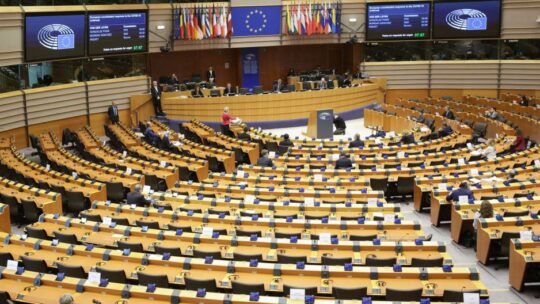A year after Croatian President Kolinda Grabar-Kitarovic and her Serbian counterpart Aleksandar Vucic met in Zagreb and agreed that the two countries should try to reach an agreement on their border dispute within the next two years, there is still no agreement between Zagreb and Belgrade on the matter.
In February 2018, the two presidents agreed that Croatia and Serbia would try to reach an agreement bilaterally, and if unsuccessful, would seek help from an international tribunal.
Serbian President Vucic had said at the time that Zagreb and Belgrade had opposing positions on the border issue.
According to officials in Belgrade, even though there has been some progress with regard to the land border, Croatia and Serbia are still far from an agreement on the border on the Danube River.
The disputed areas on the Danube stretch along some 140 kilometres of the river’s 188-kilometre course in that area. While Serbia claims that the border follows the course of the river, Croatia’s stance is that the national border follows the borders of the cadastral municipalities, established in the 19th century, which have seats in one or the other country.
A State Secretary at the Serbian Foreign Ministry, Nemanja Stevanovic, said in a recent interview with the Serbian news agency Tanjug that the biggest obstacle to the agreement were two river islands on the Danube – the Sarengrad and Vukovar islands – and that Zagreb insisted on a solution that was contrary to international law.
Nonetheless, Stevanovic noted that some progress was made with regard to the land border at a meeting of the inter-state commission for borders in 2018.
In a comment for the Croatian state news agency Hina, the Croatian Foreign Ministry dismissed the claim that Croatia was in violation of international law, saying that the border of Croatia as a Yugoslav republic had become its state border with its declaration of independence.
“The positions and demands of the Republic of Croatia are firmly founded in, and in line with, international law,” the Croatian Foreign Ministry said, adding that Croatia wanted a future bilateral border agreement to incorporate “the 1991 border of the former republic which, on the day Croatia declared independence, became an international border between Croatia and Serbia.”
In other words, Croatia wants the basis for an agreement to be the cadastre.
“This was also confirmed in the position of the Badinter commission,” it added. An international arbitration group established in the early stages of the dissolution of former Yugoslavia in 1991, the Badinter Arbitration Committee said in its ruling that former boundaries between Yugoslav republics were to become borders protected by international law, unless the countries agreed otherwise.
The Croatian ministry added that the border between the two republics was defined precisely, and had never been on the Danube.
They also said that, in the continuation of negotiations, they expected “Serbia to abide by its general position, made public on a number of occasions, on the need to respect the borders between the former republics as one of the main principles of international law, and to apply them in defining its position for the entire border with Croatia, because at present it accepts that principle for only one part of the border, in the area of Srijem.”
“We now expect an invitation from the Serbian side to a new meeting, and we hope it will be held soon,” the Croatian Foreign Ministry said.
Follow N1 via mobile apps for Android | iPhone/iPad | Windows| and social media on Twitter | Facebook.


